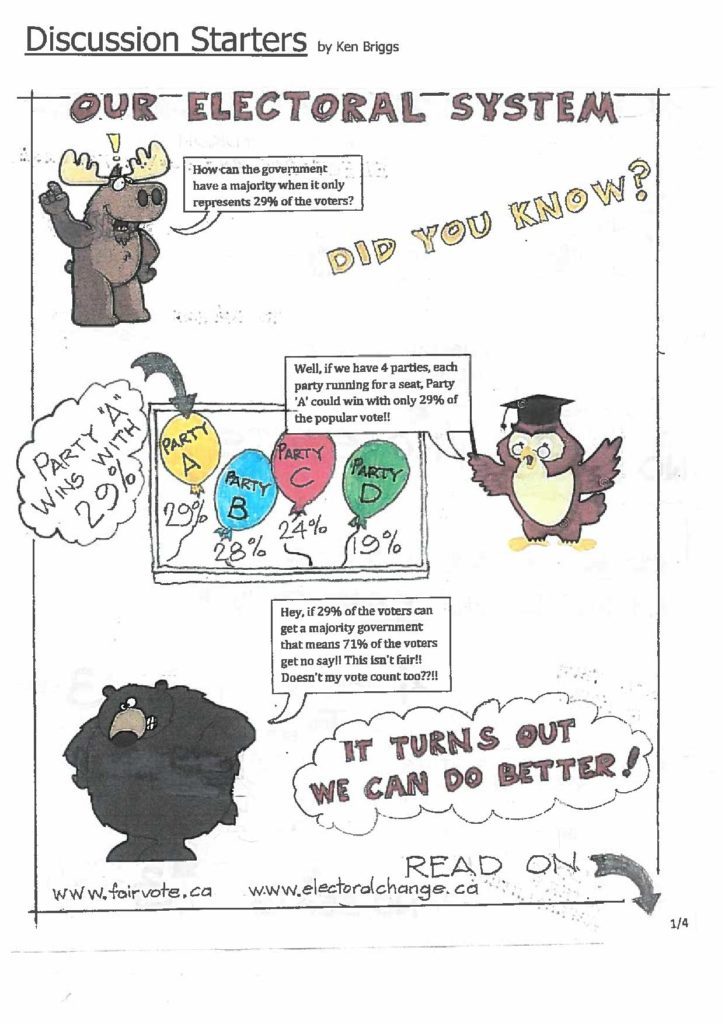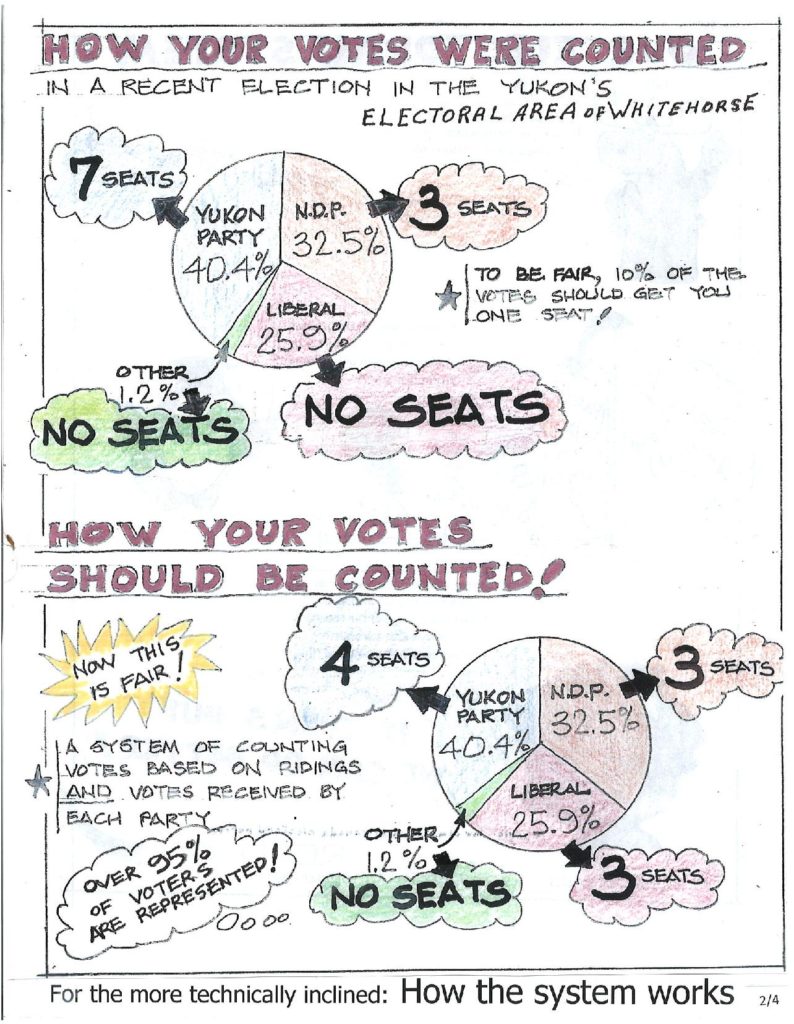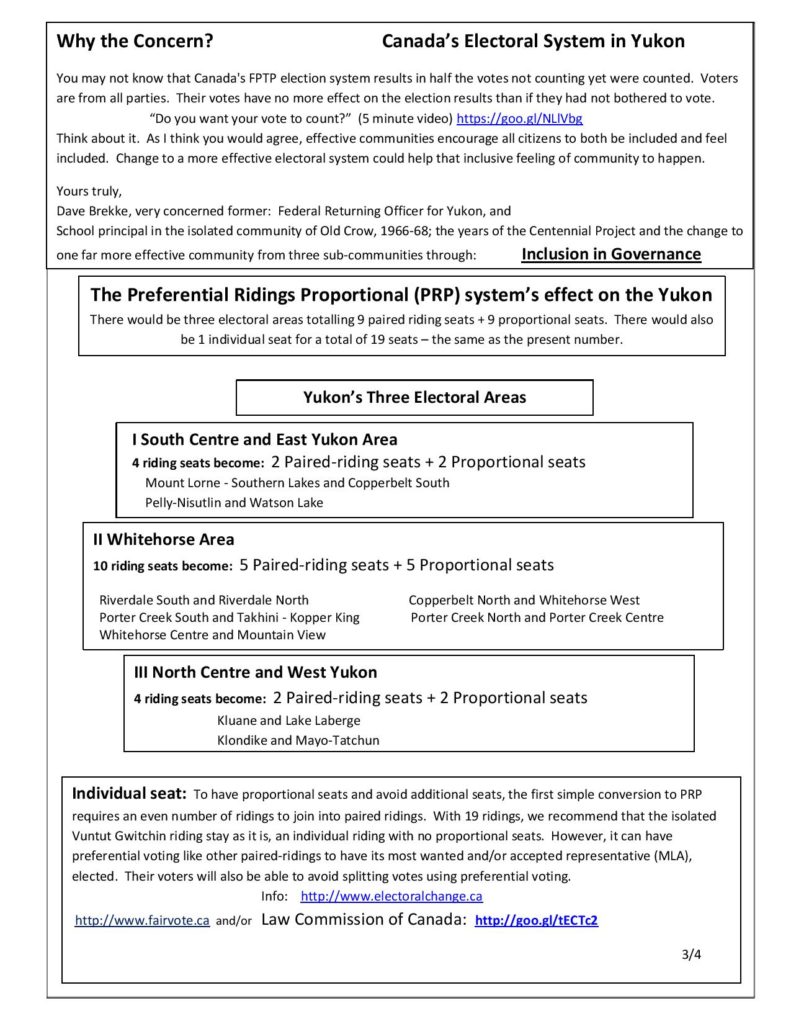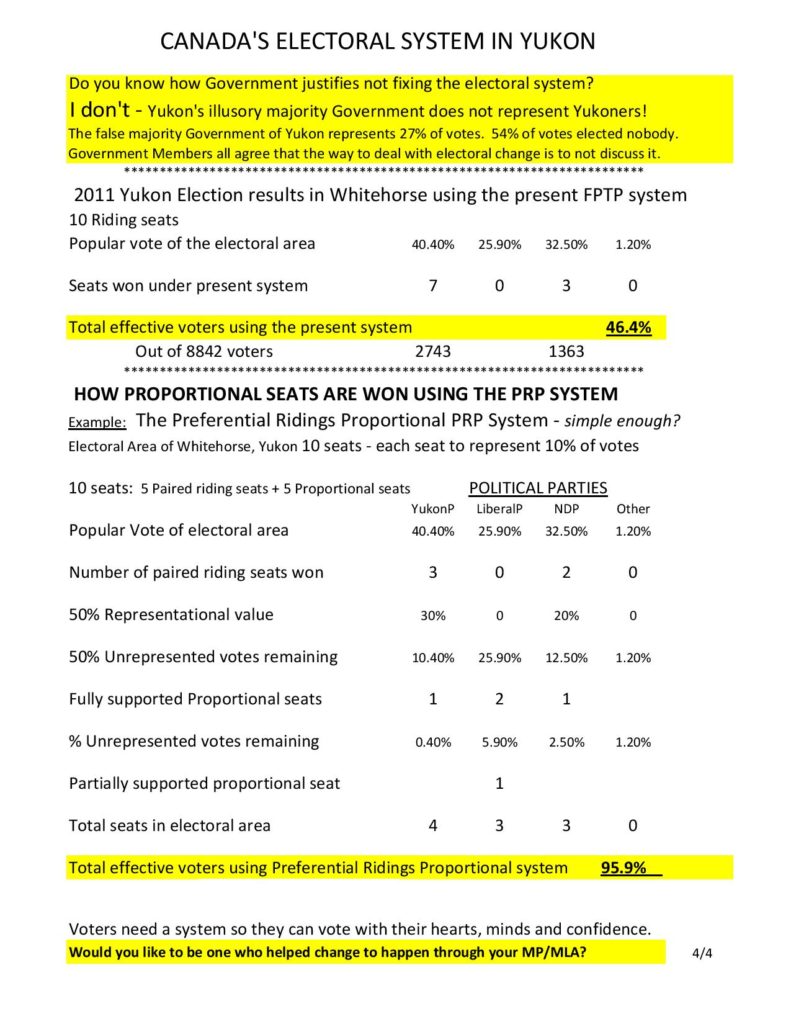What an encouraging message!
Thank you Ms. Macdonald and Fair Vote Canada for the very positive message. The Parliament of Canada with all Canadians now have an opportunity to leave a legacy of truly representative democracy for Canada’s future. Hopefully, we will succeed.
Many thanks to Hon. Maryam Monsef and the Liberal Party of Canada, Nathan Cullen and the NDP Party of Canada, and Elizabeth May and the Green Party of Canada, and anyone else whom I am not aware of, for the inclusiveness with empowerment in this representative and balanced committee.
The Special Committee on Electoral Reform has been named and the committee has had its first meeting. The committee members are: John Aldag (Liberal), Alexandre Boulerice (NDP), Nathan Cullen (NDP), Natt DeCourcy (Liberal). Gerard Deltell (Conservative), Hon. Jason Kenney (Conservative), Elizabeth May (Green Party), Scott Reid (Conservative), Sherry Romanado (Liberal), Rubey Sahota (Liberal), Francis Scarpaleggia (Liberal), Luc Theriault (Bloc Quebecois). The committee can be seen at this link received from Ms. Macdonald: http://www.parl.gc.ca/Committees/en/ERRE.
Though you and the Special Committee on Electoral Reform know about the ineffectiveness of Canada’s present electoral system, some Canadians do not yet know. When I first learned about the need for change in 2005, I was serving on a committee reviewing proposals to increase voter turnout at elections. I was shocked that there could be a better system than Canada’s ‘First Past the Post’. I thought Canada’s system must be the best as Canada was such a wonderful country. “What could be wrong with the candidate receiving the most votes winning the seat for each riding?”, was my thinking at that time. I had never before questioned it or considered other possibilities.
After realizing the need for change, my original understanding was that this change would have to start in one of the provinces or territories. Attempts were made in PEI, Quebec, Ontario and B.C. I thank the concerned people in those provinces for standing up, as those attempts helped to raise this present awareness of the need for change.
However, in Yukon’s 2011 election, the illusory (false) majority Yukon Party Government was elected by 27% of votes cast, the Opposition by 19% of votes cast, and Nobody by 54% of votes cast. With my 2005 realization, those results did not shock me. My second shock regarding elections came following that election when I asked at my constituency meeting what Government was going to do about improving our electoral system. I was told that the illusory (false) majority, “Government Members had unanimously agreed that the way all Members would handle the question of electoral reform, was to refuse to discuss the question”. Believe it or not, I couldn’t even discuss the question privately with a Yukon Party Member.
Although this change is not happening the way that I understood change was supposed to happen with one or more of the provinces or territories leading Canada. At this time I’m convinced that Canada’s Parliament with willing Canadians’ help is going to lead in bringing more truly representative democracy to Canada. When we succeed, this question should no longer have reason to be asked at Federal elections:
“Is my vote going to count?”
As Hon. Monsef has said, inclusion and increased engagement of citizens is of unquestionable importance in both the process of change and functional democracy.
Yours truly,
Dave Brekke, very concerned former Federal Returning Officer for Yukon




